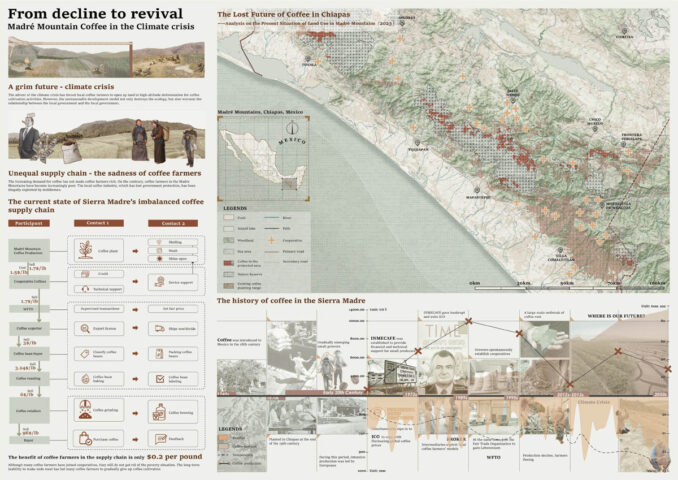
The Sierra de Chiapas in Mexico used to be the largest coffee-producing region in the state of Chiapas. However, due to the climate crisis, the existing coffee-growing areas in the region have become unsuitable. Local coffee farmers have had to move their plantations to higher altitudes and further deforestation to make room for coffee production. This unsustainable form of coffee development has led to the degradation of high-altitude ecosystems and has worsened the relationship between local coffee farmers and the Mexican government.
At the same time, the local coffee industry, deprived of government support, is exploited by the irrational coffee supply chain, and the local coffee industry is declining under the climate crisis and the exploitation of the supply chain.
Design objectives and overall strategy:
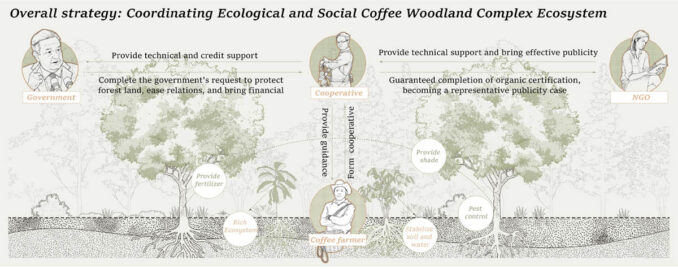
I believe that the root cause of the complex conflict in the local area is that people subjectively put coffee planting and forest land in opposition to each other, but after I conducted an in-depth investigation of coffee and forest land, I found that there is a symbiotic relationship between the two, so I hope to take advantage of the symbiotic relationship to establish a new model for the harmonious development of coffee and the local forests to promote the development of the local coffee industry and the eco-cycle. In addition, I have reconstructed the coffee industry chain according to the needs of the local coffee industry stakeholders to ensure the new system of symbiosis between coffee and forests by promoting the cooperation of the related groups to realize a new situation of mutual benefit and win-win.
Suitability assessment for future coffee cultivation:
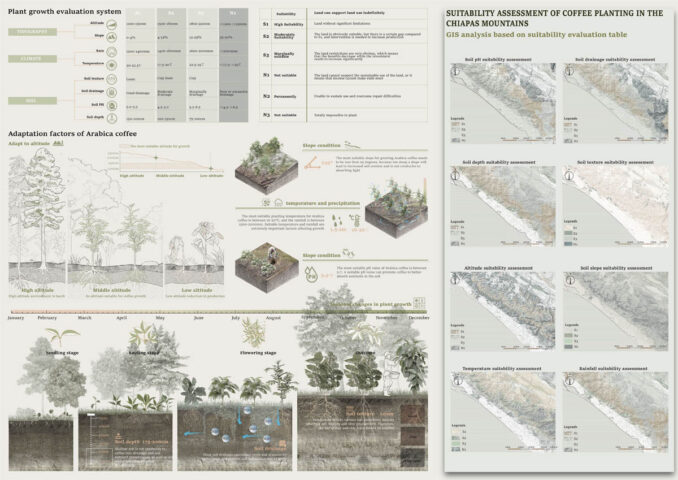
A scientific and accurate evaluation of the suitability of the future coffee plantation is a prerequisite for planning the future coffee industry in the region. Therefore, I investigated and analyzed the factors affecting the coffee plantation and re-evaluated the suitability of the mountain ranges for the future coffee plantation by using GIS according to the World Food and Agriculture Organization (FAO)’s scoring system for coffee plantation influencing factors.
Land use pattern analysis:
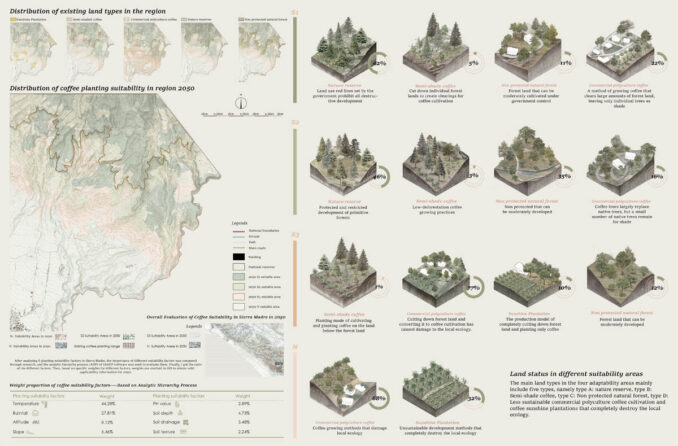
At the end of the assessment, I used the AHP algorithm to determine the different weights of each factor and superimposed the factors to obtain the future coffee suitability distribution of the whole mountain range. I then summarized the existing land uses in the different coffee suitability zones in order to determine the future direction of development.
Land Change Strategy:
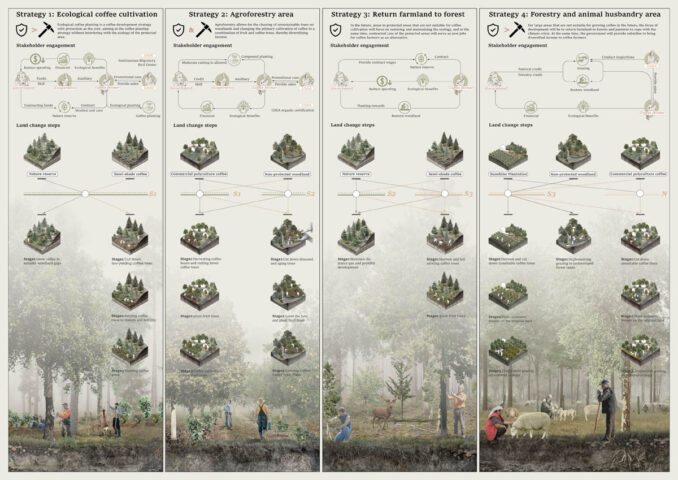
In ecological coffee-growing areas: ecological conservation is greater than coffee cultivation, while bird-friendly organizations are introduced to promote quality coffee-growing models. The government will grant coffee farmers the role of protected area managers and provide salaries.
In agroforestry complex areas: Combine fruit tree farming with coffee to promote sustainable development and increase farmers’ income, while introducing organic certification organizations to expand market opportunities.
In the fallow forest zone: prioritize ecosystem restoration, implement the role of protected area manager for coffee farmers, and provide government subsidies.
In forest-livestock complexes: transforming the coffee industry into a system combining forestry and animal husbandry, replacing coffee cultivation and providing economic subsidies.
Technical guidance on land change:

Selection and evaluation of plants suitable for local cultivation, while inter-cropping and crop rotation techniques are invoked to maximize land use and improve yields and crop quality.
From decline to revival | Madré Mountain Coffee in the Climate crisis
Student: Zhou Xuesi – East China Normal University;
Supervisor: Li Xin;
